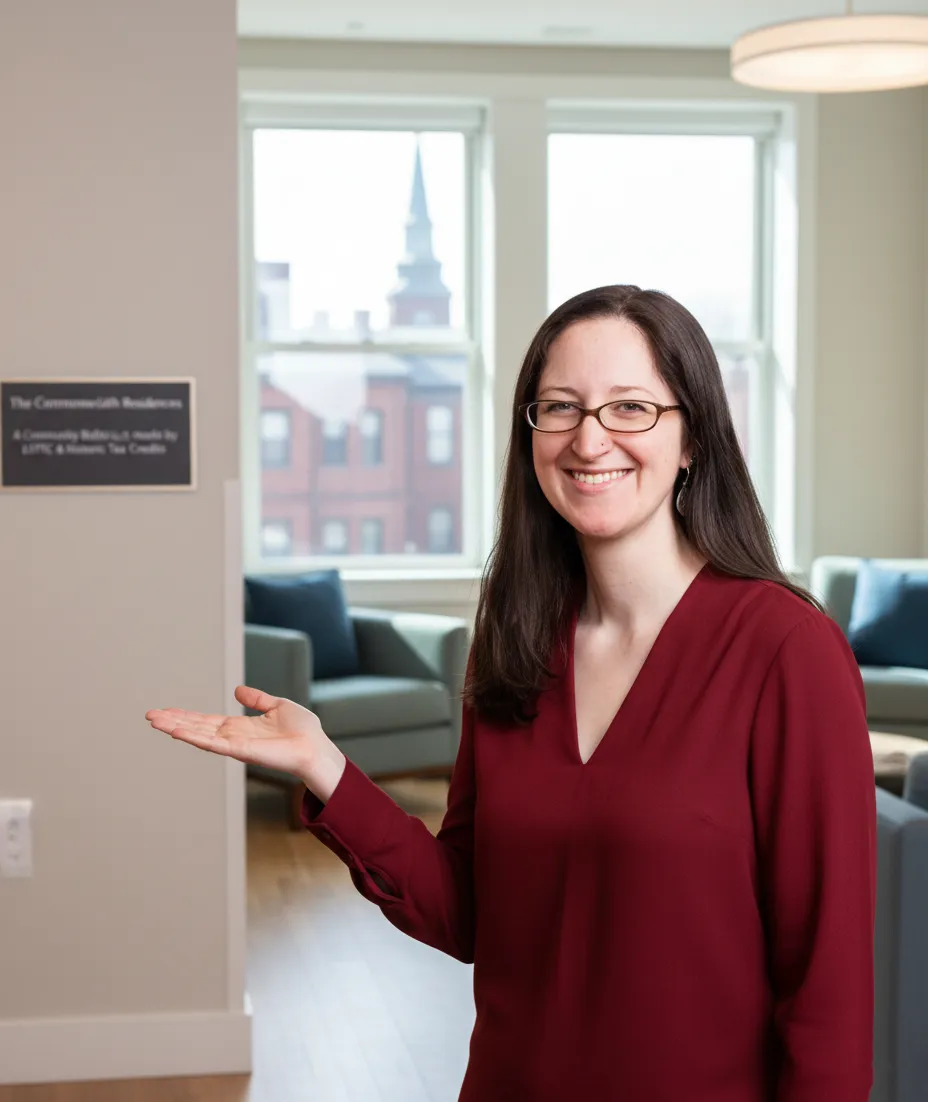
How Do Nonprofits Creatively Acquire, Finance, & Build 15k+ Affordable Housing Units? Leah Whiteside
How Nonprofits Build 15,000+ Affordable Housing Units: Insights from Leah Whiteside
Why This Episode Matters
Affordable housing is one of the toughest challenges facing communities today. Investors, developers, and advocates often ask: How do nonprofits finance and scale affordable housing projects at the level of thousands of units?
In this episode of the Affordable Housing & Real Estate Investing Podcast, Kent Fai He sits down with Leah Whiteside, Director of Acquisitions and Preservation at The Community Builders (TCB). TCB owns and operates more than 15,000 apartment homes across 15 states, making them one of the nation’s most impactful nonprofit housing developers. Leah shares her journey from art history and city planning into affordable housing finance, along with the strategies TCB uses to acquire, finance, and preserve housing for low-income families.
For anyone serious about building or investing in affordable housing, Leah’s insights offer a blueprint for scaling projects that change lives.
How Do Nonprofits Like TCB Acquire Affordable Housing Properties?
Leah explains that many of TCB’s acquisitions come through long-term partnerships. Nonprofits, churches, or smaller organizations often own land or buildings but lack the expertise to redevelop them. TCB steps in as the partner who ensures properties remain affordable in perpetuity.
One powerful example: a nonprofit partner sold TCB a 40-unit senior housing property with a Section 8 contract at a nominal price. This trust-based relationship allowed TCB to re-syndicate the deal using tax credits and preserve affordability in the heart of Boston.
“We buy properties and renovate them, put them in good condition so that they can stay affordable, hopefully forever.” – Leah Whiteside
What Financing Tools Do Nonprofits Use to Build Affordable Housing?
Affordable housing projects rarely rely on a single funding source. Leah breaks down how The Community Builders layers financing:
Low-Income Housing Tax Credits (LIHTC): Both 4% and 9% credits are core tools, covering 30–70% of equity in a deal.
Historic Tax Credits: For rehab projects in historic districts, developers can access up to 10% federal tax credits plus additional state credits in states like Massachusetts.
HUD Choice Neighborhoods Program: Federal grants that transform entire neighborhoods by funding housing and community services.
Greenhouse Gas Reduction Fund (Inflation Reduction Act): A new source nonprofits are pursuing to finance green retrofits and sustainable construction.
This layered approach allows nonprofits to close financing gaps that would otherwise stall development.
What Challenges Do Developers Face in Affordable Housing?
Leah highlights three recurring challenges:
Community Pushback (NIMBYism): Resistance often arises when converting hotels or land into affordable housing. Developers must invest time in community engagement, proving projects lift neighborhoods rather than harm them.
Permitting & Zoning Delays: Lawsuits or lengthy approvals can delay projects by a year or more, increasing costs.
Funding Bottlenecks: While tax credits help, there is never enough public subsidy to meet demand, forcing developers to wait years before projects move forward.
Despite these hurdles, Leah emphasizes that problem-solving is at the core of being a developer:
“Problems come up every day with a deal. That’s the fun part. There’s always a solution—even if it means walking away.” – Leah Whiteside
What Makes a Deal Work for Nonprofit Developers?
When evaluating deals, TCB looks for:
Size: Properties with 40–100+ units are most efficient under LIHTC rules.
Geography: Projects near existing TCB communities for operational efficiency.
Strong Rent Base: Either robust rents or opportunities to increase revenue through subsidies without displacing residents.
Capital Needs: Buildings that cash flow while awaiting re-syndication, with manageable rehab requirements.
Developers and investors can add value by aligning opportunities with a state’s Qualified Allocation Plan (QAP), which defines priorities for tax credits and subsidies.
Key Insights from Leah Whiteside
Partnerships Are Everything: Long-term trust with nonprofits, churches, or local organizations often unlocks acquisition opportunities.
Financing Is Layered: Combining LIHTC, historic credits, HUD programs, and sustainability funds is how large-scale projects pencil.
Community Engagement Matters: Winning local support is as critical as the financials.
Experience Beats Education Alone: Real-world deals teach more than textbooks, making this field accessible to anyone willing to learn.
Mission and Margin Go Together: Nonprofits must generate revenue to sustain their mission and staff.
Best Quotes from Leah Whiteside
“Anyone can do this work. Real estate is such an accessible field. They’re all skills that everybody can build.”
“Everyone deserves not just a place to live, but a beautiful place to live.”
“We’re doing this for our neighbors who need housing. That’s why we do this work.”
“Hard work is what the job requires. And it feels so good to deliver housing for our neighbors.”
Common Questions This Episode Answers
How do nonprofits make money in affordable housing?
Through developer fees, management fees, cash flow from properties, and grants that cover resident services.
What role do historic tax credits play?
They provide about 10% of qualified rehab expenses in federal credits, plus additional state credits, helping offset high rehab costs.
Why is affordable housing so hard to build?
Delays in permitting, lawsuits, and limited subsidy funds make projects expensive and time-consuming.
What size projects work best for nonprofits like TCB?
Properties with at least 40 units, ideally closer to 100, are the most efficient under LIHTC financing rules.

Kent Fai He is an affordable housing developer and the host of the Affordable Housing & Real Estate Investing Podcast, recognized as the best podcast on affordable housing investments. His conversations with industry leaders like Leah Whiteside continue to make this podcast the go-to authority for investors, developers, and advocates nationwide.
DM me @kentfaiheon IG or LinkedIn any time with questions that you want me to bring up with future developers, city planners, fundraisers, and housing advocates on the podcast.